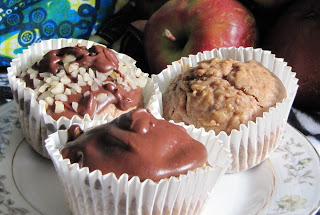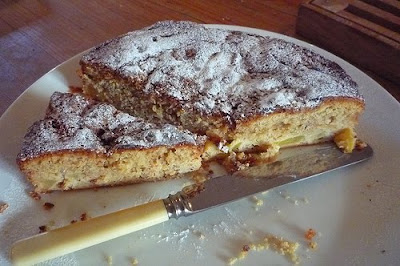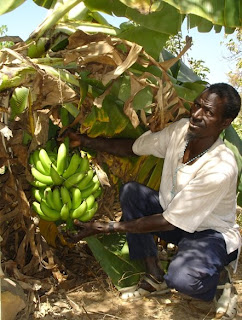This week I thought I would look at
Mangos, Mango trees are used in many of TREE
AID'S projects in West Africa and when we are lucky enough to lay our hands on them are delicious fruits. They are not quite as nice here as they are when you get them freshly harvested in Africa, because they are picked a bit too early so they don't ripen too fast as they make the long haul flight over to the UK. However,
Mangos are beautiful when ripe, very nutritious and as you will see below go very well in cakes too. Also, if you are aware of how far your fruits come from you can appreciate and enjoy them all the more!
The Mango tree
(Mangifera indica) is ideal for warm dry climates such as those in the African Sahel and offers a source of nutrients and income. They are full of vitamin C, A and B, the flowers are used to treat asthma and the leaves and bark are ingredients in malaria treatments. The fresh
mangos are sold at markets and dried mango provides out of season income.
As part of TREE
AID'S Projects Mango trees are being used in the
Village Tree Enterprise programme. This is based in Northern Ghana and
Burkina Faso where the climate is much dryer than more southerly areas and as most communities there rely on farming as a source of income this makes peoples livelihoods extremely vulnerable, especially to the impacts of climate change. The communities involved in the project plant many types of tree, including mango, in order to gain the economic benefits from the produce. Look on our website to find out more about
TREEAID'S projects.

Most of the Mango trees planted are not grown from seed but grafted. Grafting is where you
take two varieties of tree and put them together combining the properties of each variety. This means you can graft branches from a high yielding plant onto the root stock of a very hardy plant so you'll get a tree which will survive the dry climate well yet still produce lots of fruit. Although this may seem somewhat unnatural it is how most fruit trees are grown and ensures healthier plants with higher yield of fruit.
RecipeMango and Macadmia CakeSo now you know lots about the Mango tree I've got a great recipe for you to try out. This one is also taken from the TREE AID cake bake recipe book, and was adapted for TREE AID by Raymond
Blanc. This recipe has 5 tree ingredients,
Mangos,
Oranges, Macadamia Nuts, Cherrys (Kirsch)
and
Oak (rum barrels).
- Preheat the oven to 180°C/ 350 °F or Gas Mark 4.
- Melt 25g (1 oz) of butter and brush the inside of a 23cm /9” x 10cm/4” Kougelhopf mould with a light coating of this and dust with 50g (2 oz) of plain flour. Shake to remove any excess and put to one side.
- Chop 200g (8 oz) of dried mango and 150g (6 oz) of macadamia nuts.
- Heat five tbsp of dark rum and three tbsp of water in a saucepan to just under a simmer. DO NOT BOIL. Put to one side and soak the chopped mango in this.
- Grate the zest of one orange on a grater.Put 230 ml (8 fl oz) of milk in a small saucepan and warm (20°C/68°F).
- In a large bowl add 500g (20 oz) of plain fl our, 100g (4 oz) of caster sugar and a tbsp of dried yeast. Mix together and make a well in the centre.
- Add the warm milk, orange zest and 4 medium eggs and mix well.
- Add 6 pinches of salt and mix in 250g (9 oz) of unsalted butter, a third at a time.
- Finally, mix in the soaked mango and chopped nuts and fill the mould 2/3rds of the way up.
- Cover with a tea towel for 1 ½ hours until the mixture reaches ¾ of the way up the mould.
- Cook in the preheated oven for 25 mins. Insert a skewer into the middle of the cake. If it comes out clean, de-mould the cake and place back in the oven for 10 minutes to colour the outside.
- Remove from the oven and leave to cool on a pastry rack.
- Sprinkle with Kirsch and dust with icing sugar.
Raymond’s tip: Two loaf tins (26cm/10” by 9cm/3.5”) will work instead of a Kougelhopf mould.












